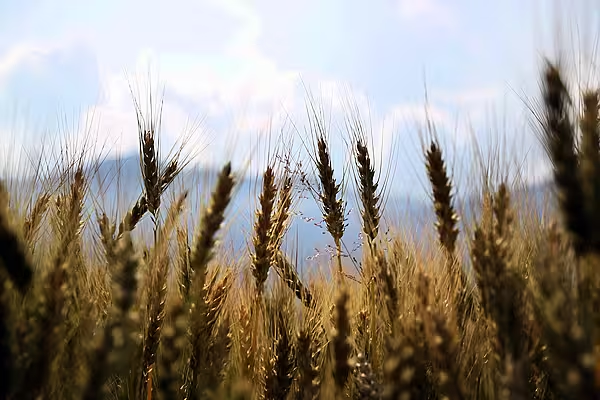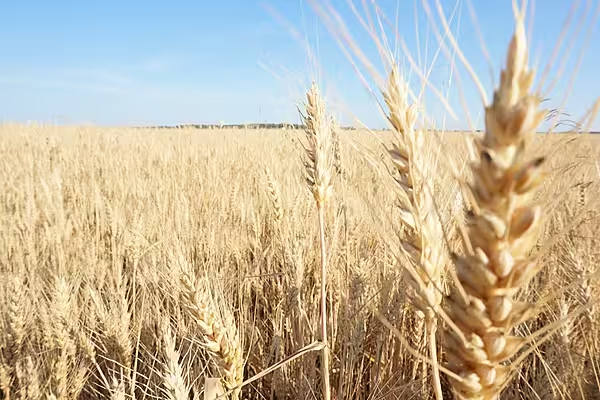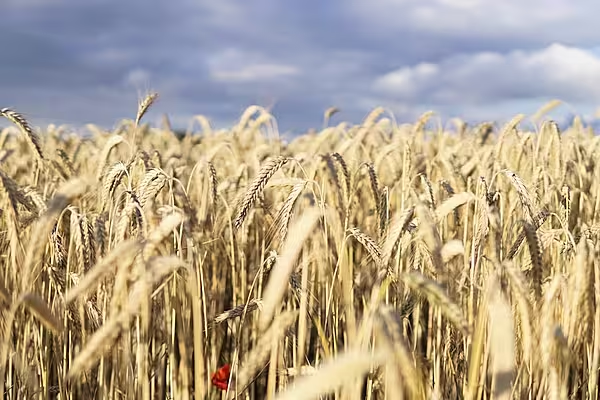The world is so overflooded with wheat supplies that even slashing the durum crop in Canada, the world’s top grower, by almost half isn’t enough to rescue prices.
Canada’s output of durum, the kind of wheat used to make pasta, is poised to shrink 45% to a six-year low, the government forecasts. Farmers planted less of the high-protein grain, and hot, dry weather cut yields. Even with the dramatic fall, prices are down about 30% from 2016 amid tepid consumption.
What’s worse: demand could decline even more next year. Italy, Canada’s second-biggest buyer of durum last season, is planning to introduce rules in early 2018 that may limit imports. That’s coming at time when consumers are already eating less pasta thanks to the enduring influence of the gluten-free craze and low-carbohydrate diets.
Italy’s plan is “just another nail in the coffin to try and incrementally grow demand,” said Neil Townsend, a senior analyst at FarmLink in Winnipeg, Manitoba. “It’s bounced back from Atkins, but now it’s kind of getting gnawed away by the gluten thing. There’s just no growth.”
Durum’s not the only variety of the grain that’s suffering. Tepid demand will help push total global wheat stockpiles up to a record 263.4 million metric tonnes this season, according to the average estimate from analysts surveyed by Bloomberg. That’s bigger than the US Department of Agriculture predicted last month. The agency will update its outlook on October 12.
Bearish Wagers
The supply overhang underscores why investors are betting on price declines for benchmark wheat. Hedge funds held a net-short position, or the difference between bets on a price increase and wagers on a decline, of 56,475 futures and options in the week ended October 3, according to US Commodity Futures Trading Commission data released Friday. The speculators have been bearish for nine straight weeks.
December benchmark wheat futures dropped 1.1% in the week ended Friday to $4.435 a bushel in Chicago.
Durum is falling victim to the resurgence of protectionist policies that are cropping up around the globe. Italy is planning to require a country-of-origin labelling for pasta sold domestically that identifies whether wheat was shipped in from abroad. The move is likely to make producers in the country, the iconic birthplace of pasta, more hesitant to use Canadian supplies.
Canadian shipments were already down 1.6% in the 12-month crop year that ended in July, according to government data. Algeria was the No. 1 destination.
Gluten Fear
Consumers are also scoffing at pasta made from wheat thanks to the gluten-free trend. Gluten is the element that gives dough its strength and stretch - making it a key component in bagels, pizza crust and pastas. It’s found in greater abundance in protein-rich wheat, like durum.
More companies are offering products like pasta made from squash and other vegetables, and consumers are will pay up for the alternatives because of perceived health benefits, said Kenneth Shea, an analyst at Bloomberg Intelligence.
That’s yet another blow to Canada’s growers, who were hoping that a rebound in domestic durum prices would help make up for yield losses after a drought hit the southern prairies. Instead, the grain is fetching about C$7 ($5.58) a bushel, down from about C$10 a year ago, said Stephen Vandervalk, a farmer and the Alberta vice president of the Western Canadian Wheat Growers.
“It’s very frustrating for farmers,” Vandervalk said. Yields on his farm near Lethbridge, Alberta, shrunk to 24 bushels an acre, half of what he harvested a year ago. “I’ll put it in the bin and store it. I’m not selling any of my durum unless it gets to C$9.”
Still, if more farmers follow suit and start to hoard the grain, it could help put a floor under prices. That’s especially true as production falls elsewhere. Global output is projected to drop by 3 million tonnes to 36.9 million, Canada’s crop ministry predicts.
News by Bloomberg, edited by ESM. Click subscribe to sign up to ESM: The European Supermarket Magazine.














